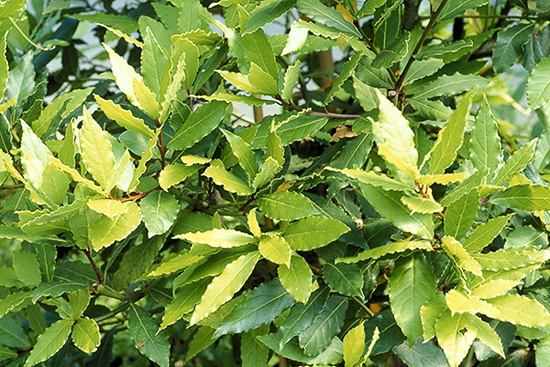 Name:
Name: Bay Leaf (
Laurus nobilis )
Perennial Shrub
Family: Lauraceae
Common names: Bay Laurel, Sweet Bay, Indian Bay, Sweet Laurel, Grecian Laurel, Roman Laurel, Nobel Laurel, Poet’s Laurel, Apollo’s Bay Leaf, Bay Leaf
Range: Native to the Mediterranean and widely cultivated in North America, Central America, India, Russia, France, Italy, Turkey, Spain, and Mexico.
Parts Used: Fresh or dried leaf
Preparations: Whole leaf, added to cooking or prepared as tea.
History: The bay laurel tree has long been known as a symbol of honor. This is why Greek and Roman scholars, otherwise referred to as baccalaureates, are always portrayed wearing the traditional head wreath made of laurel leaves. In fact, the very name of this herb implies a position of honor when bestowed upon an individual. For instance, the term baccalaureate, which translates to mean “berries of laurel,” is a merit of distinction given to those as a reward for earning a bachelor degree. A poet laureate is so named in recognition of his or her literary contributions. Greco-Roman political leaders and war heroes were adorned with laurel garlands in tribute to their sacrifice and victorious pursuits. At one time, physicians were presented with laurel to impart to them the wisdom of Apollo and Aesculapius, the gods associated with healing and medicine. Interestingly enough, the Roman poet laureate, Ovid, passed on the oral legend that the amorous advances of Apollo were rejected by the nymph Daphne since she had been by affected by an arrow through the heart cast by Cupid. In order to protect her from Apollo’s unwavering advances, her father, Peneus, turned her into a bay laurel tree.
The berries of the plant are still often found in soaps and other cosmetics.
As a culinary herb,
bay leaf is best known as an ingredient in the French seasoning mixture known as bouquet garni. Bay is also featured in Spanish, Italian, and Creole cooking where it is commonly added to flavor fish and shellfish dishes, such as bouillabaisse. It is also an excellent addition to many soups, stews, sauces, and pickling brines. A persistent belief that bay leaf must be removed from a dish due to being poisonous stems from confusing bay laurel with cherry laurel, the leaves of which are toxic. However,
bay laurel leaves often retain their shape after cooking, the stiff edges of which can be sharp and cause a cut in the mouth or throat.
Constituents: 1,8-cineol, eugenol, terpineol, geraniol, linalool, phellandrene, pinene
Cautions/Contraindications: None known.
Disclaimer: This information has not been evaluated by the U.S. Food and Drug Administration and is not intended to diagnose, treat, cure, or prevent any disease.
